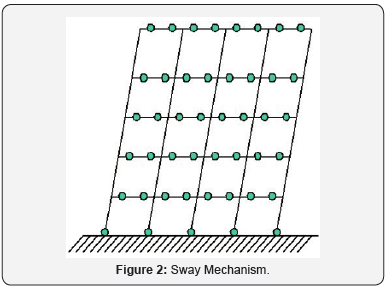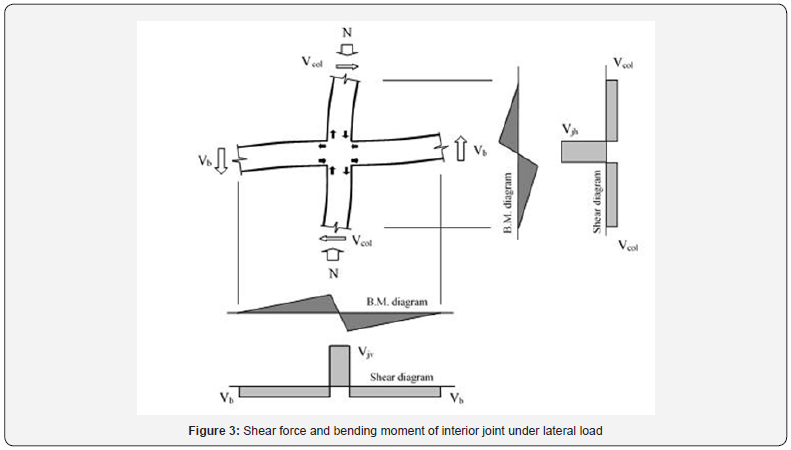Discussion on Seismic Performance of Non-seismically Designed Structures- Juniper Publishers
Civil Engineering Research Journal- Juniper Publishers
Introduction
Seismic performance of existing structures, which are non-seismically designed, has been a hot topic recently [1]. Low to moderate seismic region, such as Hong Kong and UK, has no seismic consideration traditionally, though strong wind design may be incorporated. In contrast to wind design, it is widely accepted that it is uneconomical to design a structure to withstand an earthquake elastically. The general principle is to provide sufficient ductility to dissipate earthquake energy. Plastic hinges are designed to form in potential plastic hinge regions in beams or columns. However, it is preferable to form plastic hinges in beams instead of columns as “story mechanism” (Figure 1) would normally induce larger inter-storey drift than that of “sway mechanism” (Figure 2) and leads to instability. The concept of “strong column – weak beam” is, thus, widely adopted.


Discussion
The following discusses several aspects of traditional practices of existing buildings, which may affect their seismic performance.
Beam-column joint
When a reinforced concrete frame is subject to lateral loading, beam-column joints are assumed to be rigid and they play an important role in transferring moments and internal forces among adjacent beams and columns. The shear force within the beam-column joint can be several times of those within beams and columns, as shown in Figure 3. Figure 4 shows that shear failure of joint occurred when beam only reached around 70% of its flexural capacity. Without proper design, beam-column joint can be the most vulnerable element in the reinforced concrete frame. In post-earthquake reconnaissance, shear failure of joint leaded to collapse of many reinforced concrete buildings [2].


Characteristic of links
For convenience, the links of many existing buildings are anchored with 90 degrees at the ends. Such anchorage would open easily once the cover concrete was lost. It is not strong enough to provide confinement to laterally expanded concrete and to resist the buckling of longitudinal reinforcement [4].
Lap splices of column
In traditional practice, it prefers the lap splices to be located at the end of the columns for construction easy. However, it is not a favorable location from the seismic design’s perspective. Plastic hinge may form at the ends of columns during earthquake. Lap splices are weaknesses of the column and it may cause collapse before the formation of plastic hinge [3].
Conclusion
In conclusion, traditional construction practice in nonseismically designed buildings has potential adverse effect on their seismic performance. For region of low to moderate seismicity, the seismic risk is in the case of low probability but high consequence. In view of the staggering number of existing buildings, there is an urgent need to review and carry out further research study to retrofit existing buildings with consideration of low to moderate earthquake excitation. It is not wise to adopt strong earthquake design directly as the probability of a severe earthquake is low [4].
Acknowledgement
The author is grateful for the supports from the Research Grant Council (RGC) of Hong Kong (UGC/FDS25/E08/17).
For more open access journals, please click on: JuniperPublishers
For more civil Engineering articles, please click on Civil Engineering Research Journal
https://juniperpublishers.com/cerj/CERJ.MS.ID.555712.php


Comments
Post a Comment